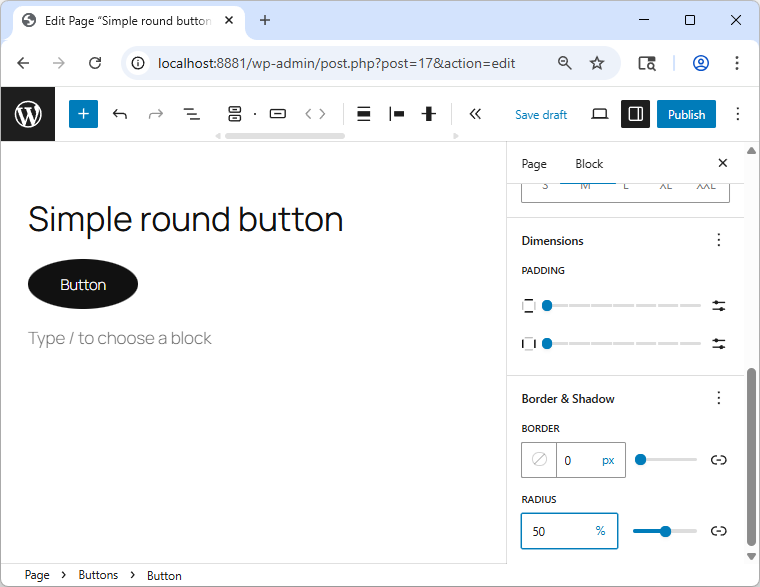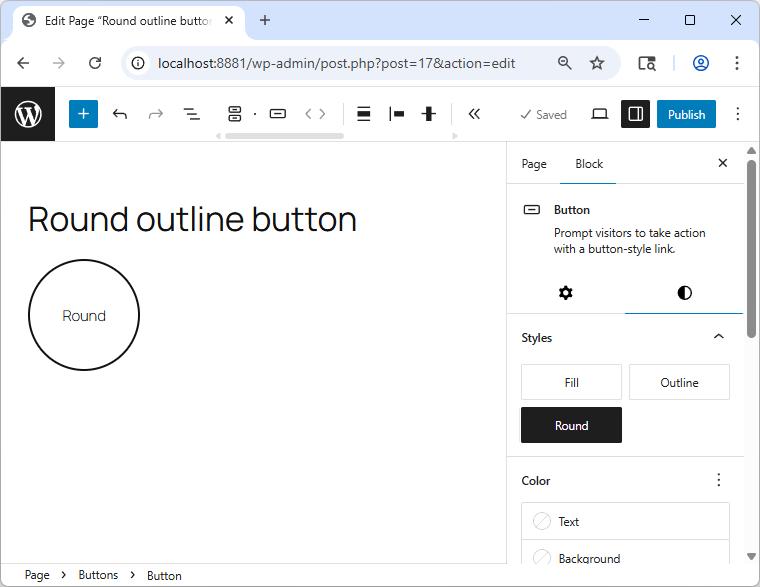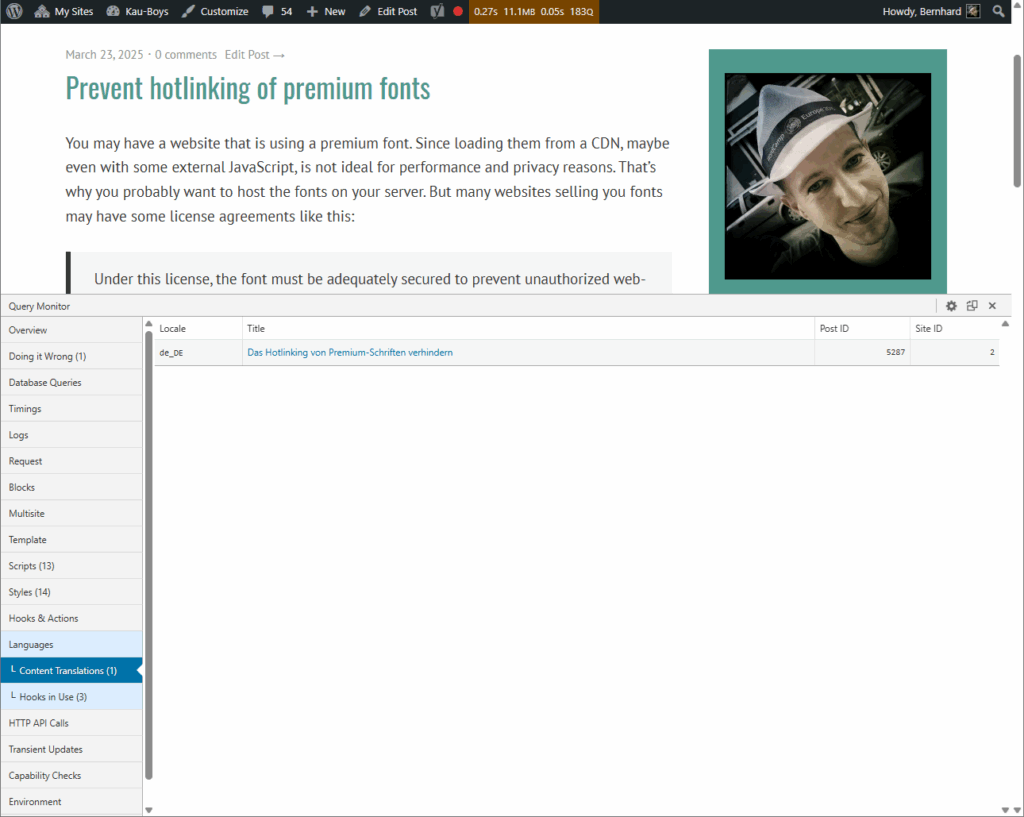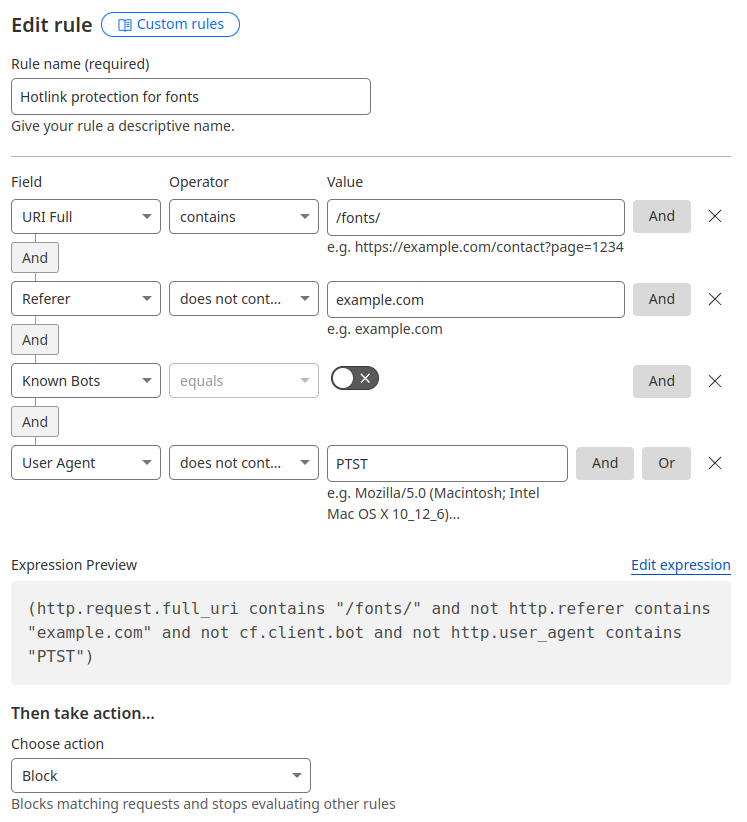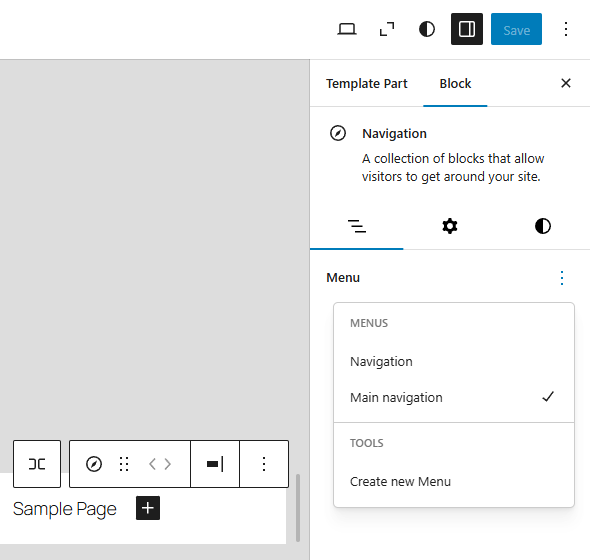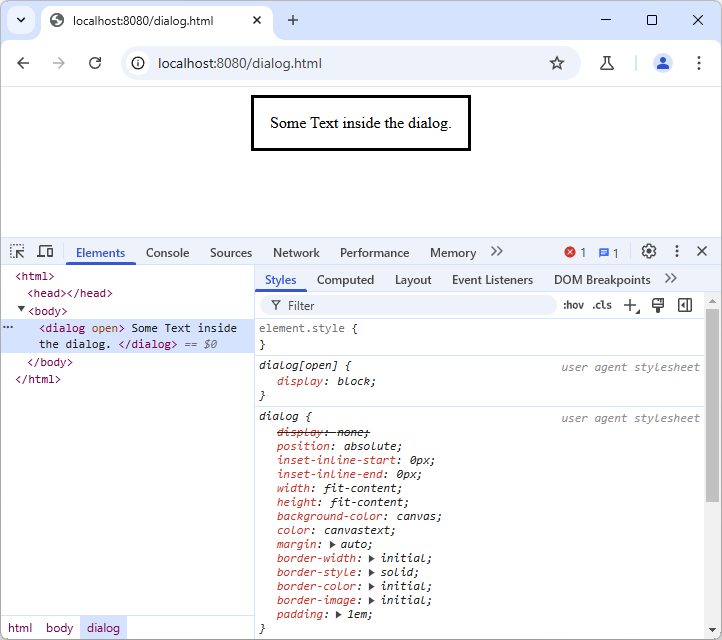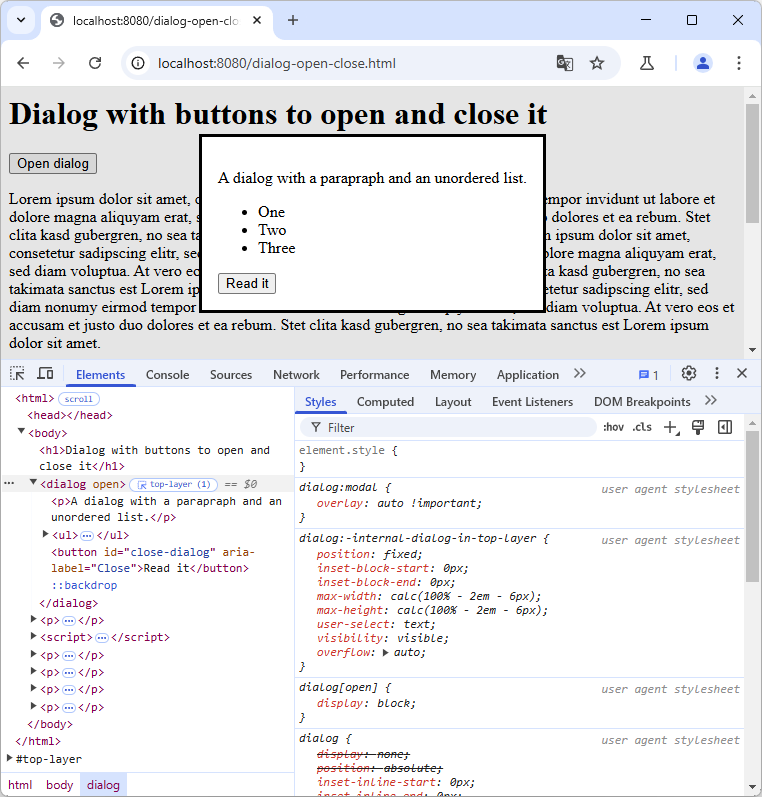Some of you might know, that I grew up in Mannheim, where I’ve lived for 26 years, before moving to Berlin. On the way to this year’s WordCamp Europe, I’ve spent some days in Mannheim, before taking a train to Basel, Switzerland. After only 121 minutes, we arrived – on time – in Basel. Taking the tram to our accommodation for the next days, we’ve realized what an absolutely beautiful city Basel is! How can I have lived so close to such a city for so many years and never visited it?
Some sightseeing and museums
As we’ve arrived on Tuesdays, and the Contributor Day would only start on Thursday, we had some time to explore the city. When you book the accommodation in Basel, you get the “Basel Card”, which gives you free public transport and discounts in many museums and other places. We’ve used it quite intensively, but Basel is also quite good to explore by just walking.
Our accommodation was next to “Marktplatz” (market square), so we started there and briefly went into the town hall courtyard. We continued walking through some old streets and took the chance to buy some nice things. Next, we went to the “Carnival Fountain” from Swiss artist Jean Tinguely. Different sculptures were moving and spilling water around. A very different and fascinating fountain. We liked it so much that we decided to visit the Tinguely museum the next day. But first we continued to the Basler Münster (Basel Minster), a cathedral from the 11th century. Behind the cathedral, we found a very unique type of transportation, we had to take: a “wooden ferry”, that does not need any “power” to cross the river. It would just steer around 45° into the flow of the Rhine river to make it to the other side.
The next day was rainy, as most days this week, and we only went to the Tinguely museum, which really had some very cool sculptures. In order to not wear the mechanics out too fast, you could only activate them every 9 minutes manually by pressing a button. In the evening, we had a nice team dinner with my colleagues from Syde.
Contributor Day
Like on previous flagship WordCamp events, I’ve volunteered to be a Table Lead at the Contributor Day for the Meta Team. Even though only one contributor joined my table, we had some great outcome. Xaver worked on a cool new feature, that would allow WordCamp organizers to check in attendees much faster, by scanning a QR code to find them in the list and mark them as attended.
As always, the Contributor Day is over much faster than you think. The evening was dedicated for “The Social”, the invite only event for all organizers, volunteers, sponsors and all other people making WordCamp Europe happen.
The first conference day
Syde had a booth in the sponsors area, but I did not have any “booth duties”, so I could take the chance to see some talks and talk to people.
WordPress without Borders — The Fight for Digital Freedom
After the opening remarks, I’ve stayed for the first talk, a keynote from Noel Tock. He shared some stats on WordPress and how the number of installations have been influenced by events in the past years, like the pandemic. But then he turned it into a presentation on how WordPress does help charities in their work. Since he himself has a charity that rescues dogs in Ukraine, he highlighted some other charities which operate in Ukraine and what they do. A very different and emotional start into WordCamp Europe.
Building Support as core of product
After taking a break and mainly talking to sponsors and attendees, I went back to track 1 for some lightning talks. For the first one, I was a bit late, but still got some cool tips from Anna on how to make support an important part of your company and not only a responsibility of one team.
3 WordPress Agency F*ckups and What I Learned from Them
The second one was a fun one. I had the chance to briefly talk to Jennifer at the Contributor Day about her talk. She told the audience of “nightmares” she experienced in various projects. With many of those, I could relate, since I’ve experienced them myself in the last 10 years working for WordPress agencies.
What we learned from building Site Kit and how you can apply this to your WordPress site
In the last lightning talk of this round, Mariya shared some stories about the Site Kit, the official WordPress plugin from Google, and how the learning from this plugin can help others in their own work. It is always difficult, if not even impossible, to create a plugin that serves everyone.
Connecting cultures at SWI Swissinfo.ch: The journey to international audience engagement
This was the first talk one of my collegues gave. Our Commercial Director at Syde, Ronny Marx, shared the stage with Isabelle Schrills from Swissinfo. They both shared insights on a shared project from the client and agency point of view and highlighted how well a project can turn out if both sides work collaboratively on a new website. Since Swissinfo publishes content in 10 different languages, the use of a WordPress Multisite combined with Syde’s own multilingual plugin solution MultilingualPress fitted perfectly for this type of project, and Isabelle reported, that everyone was really happy with the new system and was not looking back on the legacy one.
WordPress Speed Build
One of my highlights of WordCamp Europe 2024 in Torino was the Speed Build Challenge, hosted by Jamie Marsland. In this editon, Ellen Bauer and Fabian Kägy got a real “challenge”. Jamie presented them with a “fancy” ecommerce side, including some marquees, sliders, playful fonts and other things that were hard to recreate. Fabian managed to get more things done visually, but Ellen even went as far as setting up WooCommerce, so the results was a real shop. The task, however, was not really doable in 30 minutes, but both had great fun and entertained the audience in their attempt to recreate the page.
The second conference day
I’ve initially signed up for my first ever WCEU workshop, but somehow did not receive my confirmation. OK, I was also very late with registering, so it’s my own fault. And as we had to move to a different hotel for the last night, I took it slowly in the morning.
Multilingual WordPress for developers
Another colleague from Syde, Dennis Plöttner, gave a talk in track 2 about multilingual WordPress. This is a topic Dennis cares a lot about, since he also wrote a free plugin to create a multilingual website. Even though I have experience to make WordPress code translatable, I’ve learned some new things from his presentation. Such a topic always gathers a large audience at WordCamp Europe, and especially in a country with four official languages, like Switzerland.
WP Cafe: Five for the Future
After a small break, I joined other attendees to talk about the “Five for the Future” initiative. In light of recent events, there were many things to discuss. Many people shared great ideas, and I am very much looking forward to seeing some momentum in this crucial initiative in our community.
Why Block Themes Make WooCommerce Stores Better
Some of you might know that I don’t like ecommerce. It has nothing to do with WooCommerce or any other solution, I just don’t like the complexity around it and the time it takes me to get into it, when I only have the chance to work on ecommerce projects quite rarely. But I was looking forward to the talk from Ellen. It was packed, and I’ve learned some new things about how blocks can really turn WooCommerce into a new experience for merchants in the future. She was also presenting some first bits of a new WooCommerce “default theme”, I can’t wait to take a look at, once it will be released in about a month together with WooCommerce 10.
Fireside chat with Mary Hubbard and Matt Mullenweg
After many sponsors had their raffles – I did not win anything, but one of my colleagues won a Braille Lego set – I went to the final session. The first half was some talk between Mary – which I haven’t had met before – and Matt, in which Mary asked some questions. The second half was with questions from the audience, and both Mary and Matt allowed for some 15 minutes extra to answers all of them.
Closing Remarks
Always a special part: we could thank the amazing organizing team and all the volunteers for their work. I’ve tried to capture the moment, but the lens of my phone was now wide enough to get all in one shot. This shows, how many people help to make this week an event for all of us!
Then the moment all attendees waited for. The current Global Leads say goodbye and the new team is coming on stage to announce where WordCamp Europe is going to next year. I had a strong guess and was right. But see for yourself:
The After Party
Yes, there was also an After Party, as every year. I took the chance to speak to some people I haven’t had the time to talk to, yet. And still there were some attendees I have not spoken to this week. Even if this year was smaller with “only” 1723 attendees, there is just not enough time to catch up with everyone. But I hope that I will see many of them next year in Poland!
Conclusion
I’ve been to all WordCamp Europe editions, and being in Basel I’ve realized, that there have been as many WordCamp Europe event (including the online ones) since Berlin, than before Berlin. I can’t believe it’s been that long ago.
Basel was special in its own kind. The weather might have been the rainiest for a WCEU, but the city was just amazing, and I’m glad I was able to attend again. But Basel was also the most expensive one. Not only for the organizing team, who had to work around a very tight budget. With only 50€ per ticket, they still managed to find enough sponsors to dev lier a great overall experience. But unfortunately, for some many community members, Basel was just too expensive to take the journey this year. I believe that Poland will allow many more attendees to return, which will also result in a much more diverse group of attendees, not just the ones who can afford it or are sponsored to attended by their employers. I’ll hopefully see many of you next June, then!
